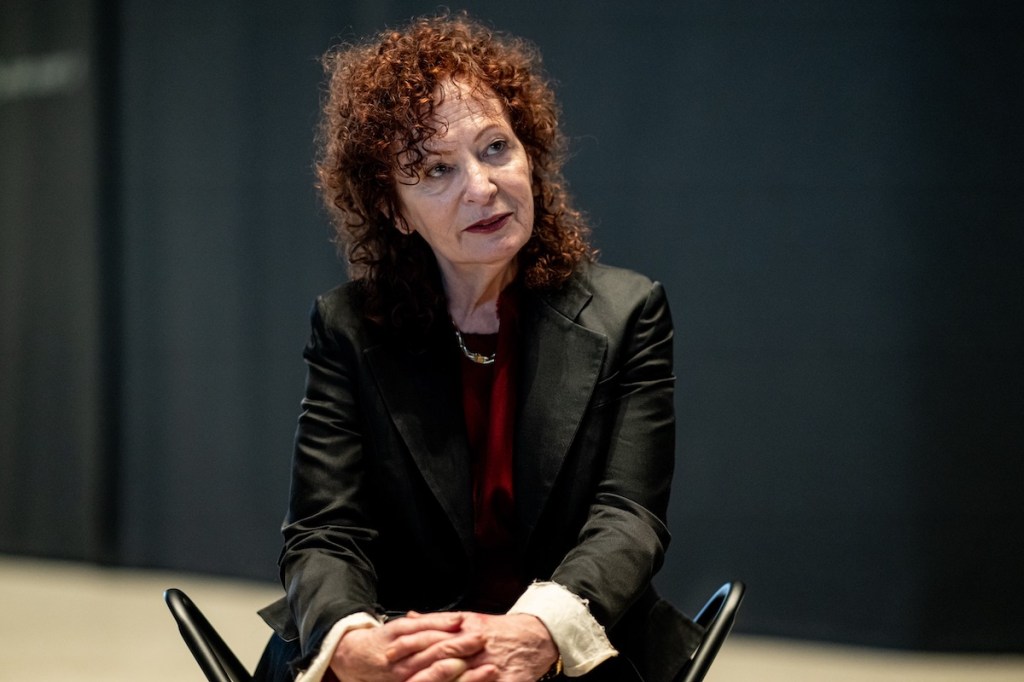What’s the first thing that comes to mind when you think of soul food?
Is it a Sunday-dinner spread of perfectly seasoned fried chicken, collard greens and all the fixins? The overwhelming sense of satisfaction and comfort? Or my personal favorite — the nirvana that takes over when the mac and the cheese and the yams touch on my plate.
Hulu and Onyx Collective’s new docuseries “Searching for Soul Food” captures those same feelings of joy, community and gluttony while making thoughtful connections between our beloved cuisine, its origins in Black history, and resiliency. At the show’s heart is its host, owner of the Los Angeles eatery My 2 Cents chef Alisa Reynolds, who perfectly blends all these ingredients together. Like Stanley Tucci in CNN’s now-defunct “Searching for Italy,” Reynolds is a bright light that travels from city to city using her sense of humor, love of food and the ancestors as her guide.
What’s also interesting about “Searching for Soul Food” is that through Reynolds’ lens, soul food crosses borders — geographic and cultural. It’s not just about the African American experience but also about the spirit of the Black diaspora including South Africa, Peru and Jamaica. It’s also not even just Black, as she visits the Choctaw tribe in Oklahoma, white folks in Appalachia, and Italians in Naples, Italy.
For Reynolds, the culinary thread that connects us is the ability to make something spectacular in the face of colonialism, white supremacy, immense poverty, and even the threat of an erupting volcano.
This interview has been edited for clarity and length.
As a “classically trained, soul food-raised chef,” what inspired you to create “Searching for Soul Food”?
Honestly, it was the reality of potentially losing my restaurant. The show became a part of me thinking that if I could leave that place right now and still be able to inspire people with his, then maybe I could deal with it. I focused less on what I could lose and more on moving forward.
I’ve traveled before but never saw anyone that looked like me traveling the world and talking about food this way. I knew I wanted to tell our history, but everything is so gloom and doom. So I wanted to make something where you can learn about the past but not feel super shitty afterward. It’s about digesting it in a way where now it’s love, and we can explore and understand how people made this food and the legacies of the recipes that came out of these painful circumstances.
So often, when we talk about soul food, it’s often about how it’s unhealthy and will kill us. Yet, your show doesn’t shame the food; it celebrates it. Why was that important?
I’ve seen people talk about why we should stop eating soul food, making really blanket statements about our ancestors and the traditions, basically trying to get rid of them without knowing where soul food started. Do you realize we had more gardens back then than we do today? Did you realize that that was the first physical farm-to-table? That, and we ate way more greens and vegetables back then because meat was a commodity. I just want us to talk more about keeping the traditions alive and how that can still be good and healthy.
Soul food comes from the African American tradition, but the show expands its reach by exploring “soul food” from Naples, Italy, to the Choctaw Indians in Oklahoma, to Peru. During your travels, what were the cultural similarities that you found?
One of the significant similarities I found was how many of these cultures had a history of creating something from nothing, which we know comes from colonization. I also saw how dedicated people were to keeping the tradition alive and fighting erasure, because the meals were created during tough times and meant so much to many people. It was like spreading love through food; when your back is up against the wall, you can create love by feeding somebody and building a sense of community.
Watching the show reminded me how much I hate the phrase, “I am not my ancestors.” As if we come from people who were passive in the face of oppression, when in fact they were resilient and had different ways to resist — food was one example of that.
Absolutely. I will never understand this idea of disrespecting our ancestors. That’s like me saying I’m not my mama’s child. Even if I never talk to her again, some mannerisms are in me because of her. It’s the same with our ancestors. We can look back and say they really paved the way forward without having the choices we have now.
So much in our food is about that resiliency and connection to our ancestors, and what it says about their hearts and the history on that plate. To not just create something in a challenging time, but regardless of being mistreated, they still found time to create joy on a plate, and how what we’re eating now comes from that. We should be thanking the people who came before us. It’s up to us to continue that legacy, not erase it.
Let’s talk about the Appalachian episode. I would have never connected that region with soul food, and yet here we are. [Laughs] How did that come about?
I wanted to go to Appalachia, but nobody else did. They were like, “What’s wrong with you?” But I wanted to go to the furthest place to where I heard they don’t like people that look like me. So I wanted to take my Black ass up there and see, “What don’t you like about us?” I also heard that Appalachia was a place where they didn’t like anybody — not just me, but anybody who wasn’t from there.
So when I went, I was like, “Oh, I get it. I’d be right here if I didn’t want to be around anybody.” [Laughs] The people there never really had anything and had to live off the land. They were always on their own shit and had a lot of challenges.
But still, it was like “Duck Dynasty” on steroids and I didn’t want to leave my hotel room for a bunch of nights. It was intense. But at the same time, I saw that there were beautiful people too who wanted to capture their own recipes and hand them down to the next generation. Also, there are Black people in Appalachia too!
Since you’ve been back home to Los Angeles, what recipes did you learn on the road that you want to try?
Yes! Let’s start with America — the chocolate gravy from the Appalachia episode. I’ve never had anything like that. I don’t know if I would re-create it exactly, but it’s like chocolate on a biscuit. Also, the chakalaka in South Africa, (a curried vegetable and bean relish) which is like salsa-ish. I can eat that and rub it on everything. It’s ridiculous. But it didn’t come out right when I made it at home [Laughs]. I’m looking forward to making the Peruvian pot recipe with the guinea pig, which is kind of like squirrel. They’re like cousins and have the same kind of texture. I need to figure out where to get guinea pig in LA, but we’ll be eating that too.








